Actors sometimes suffer for their art and recognise it’s worth the effort if it brings something extraordinary to the screen.
We’ve all heard about the likes of Robert de Niro and Dustin Hoffmann immersing themselves in roles to the extent where they were prepared to tolerate physical injury.
But there are other occasions where thespians cry foul when the director calls “action” and nobody was more prepared to go to war on the set of TV series Sharpe than Brian Cox.
That’s because cast members – filming in Ukraine – were asked to perform dangerous stunts, left outraged by alleged cruelty to animals and poisoned by a parasitic microbe.
The Sharpe stories, Bernard Cornwell’s first books, were made into the long-running TV series which finally ended 14 years ago this week in November 2008.
And the Dundee actor recently reflected on the “misery” he and his colleagues endured after travelling to the former Soviet Union in 1993 to film Sharpe’s Rifles with Paul McGann in the lead role – but not for long after he suffered a football injury.
That led to him being replaced with Sean Bean and the rest, as they say, is history.
Except for Cox, who gave producers the sort of short shrift his most famous TV character, Succession’s Logan Roy, would be proud of. More on that later.
It was a nightmare from the start
What were the problems?
In his autobiography Putting the Rabbit in the Hat, he wrote: “For a start, you had a bunch of film-makers from the UK, way out of their comfort zones in the former Soviet Union, working with Russian co-producers, who cut corners by underpaying the local crew.
“On top of that, you had a horrible run-down location, far too close to the fall-out of Chernobyl for comfort, and showing signs of having been seriously affected [by the disaster at the nuclear power plant seven years earlier].
“Then, you had abysmal facilities, nothing like the standard we were used to at home; you had terrible, terrible food; you had a director who was either drunk or hung-over the whole time; and, worst of all, you had everybody struck down with illness.”
This litany of woes left the cast not only bedraggled, but positively ill.
At this stage, several other TV series, including Cadfael with Derek Jacobi, were being shot in eastern Europe, but the Sharpe set was on a different scale of torment.
Cast and crew dropped like flies, and more convincingly than they did in some costume dramas of the period.
Cox and colleagues were laid low by a microbe called giardia, which made Montezuma’s revenge seem like a picnic.
Everyone did their best to keep their breakfast down, but their efforts were futile, as nearly everybody succumbed to symptoms including stomach cramps and violent diarrhoea.
The constant queueing for the toilets meant that filming schedules went out of the window and the actors didn’t have to fake their pained expressions.
If many of them looked gaunt and haunted, it’s because they didn’t eat properly for weeks on end.
Row over animal treatment on Sharpe set
Cox was equally scathing about the manner in which some of the local crew behaved with the hapless animals on set and it led to a furious confrontation which, according to the Scot, nearly sparked a punch-up with a supposed colleague.
He lost his rag with one of the producers who punched his horse right in front of him; the Scot understandably went ballistic at witnessing such cruelty.
But, amazingly, he was told by his Russian antagonist that he didn’t understand how horses needed some “persuasion” to act in the right manner.
This was a culture clash with a vengeance with no quarter asked or given.
But Cox gave him the full Dundee treatment and bawled at him.
And, remember, he was the original Hannibal Lecktor in Manhunter (aka Lecter in the Thomas Harris books and in the later remakes), so he could put the fear of death into the best or, perhaps in this case, the worst of them.
Any notion of health and safety was pooh-pooed by the local executives.
Stunt arrangers were an expensive luxury, or so they argued, so when the sword fights and cavalry scenes were filmed, they didn’t care they were driving a bus through the regulations.
In one scene, and this was visible in the first episode, Nolan Hemmings, who was the son of the esteemed British actor, David, stabbed an extra with his sword and the blade “went in, not shallow”.
Another member of the cast, Gavan O’Herlihy, fell off his horse and broke his arm.
Elsewhere, McGann tore his cruciate ligament and the already troubled production, was flung into even deeper turmoil.
Cox surveyed all this, like the “elder statesman of the group”.
And he resolved that, whether Sharpe was a hit or not, he had no intention of enduring this again.
The ‘Logan Roy’ Sharpe exit
Eventually, the lead part was recast for Bean, who subsequently appeared in the programme for the next 15 years.
And Cox and his confreres were forced to return to Ukraine and film “the whole bloody thing again” with a new director, which proved less appalling than their previous ordeal, but only because they knew what to expect.
At this stage, Cox was offered the option to continue in the role of Major Michael Hogan and, if he had accepted, it would have given him a nice meal ticket for the next decade.
But you might as well have asked him to star with Nigel Farage in Five Go Mad on Brexit Island.
He had made his mind up and it was time for a Sharpe exit.
Regardless of the difficulties on location, the two Sharpe films were eventually made and the series proved such a resounding a success that it ran for the next 15 years.
But, though the producers wanted Cox back for subsequent seasons, he had suffered enough and made it clear he wasn’t prepared to endure such indignities again.
As he said: “I didn’t literally tell them to f*** off, in the same way that the shoot hadn’t literally been a s**tfest, or that s**t hadn’t literally hit the fan, I certainly did so metaphorically.
“I actually liked the part, but I just wasn’t prepared to put up with the conditions.
“Those who were asking me for years afterwards: ‘When is Major Hogan coming back?’ were told: ‘Never. He’s f***ing never coming back.'”
And he never did.
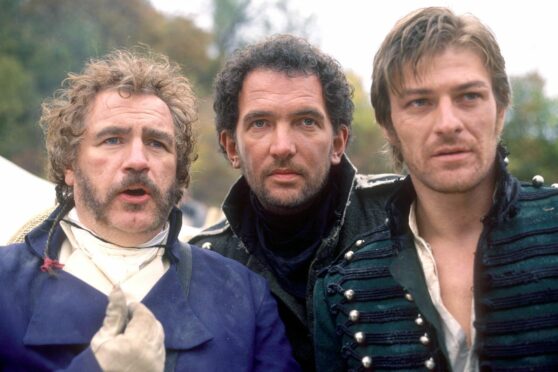
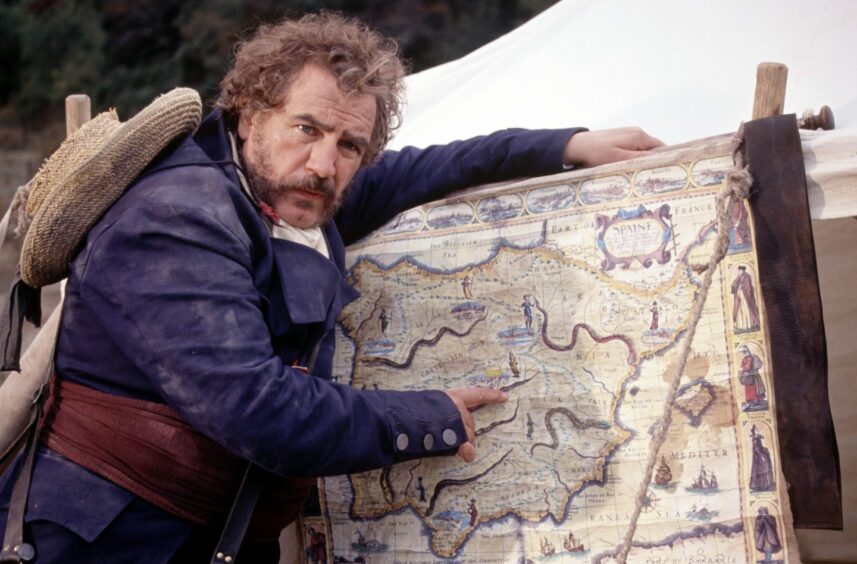
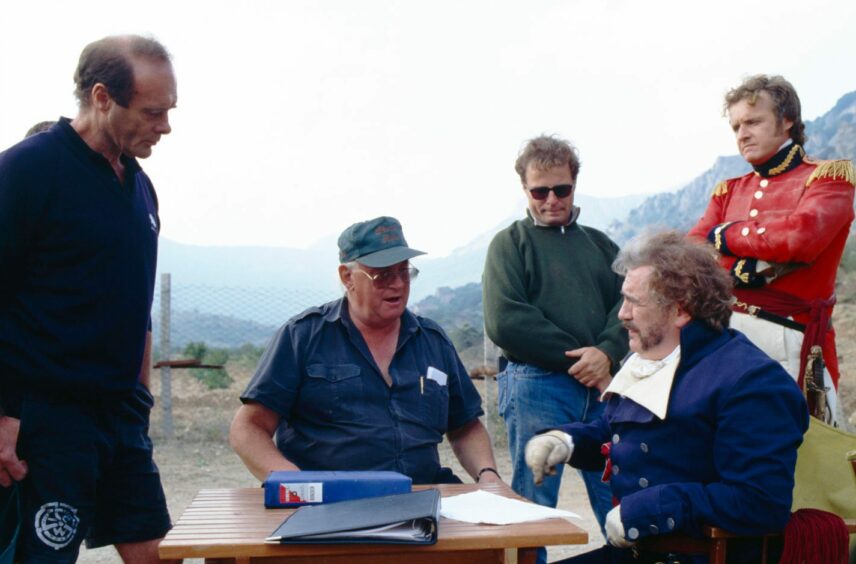
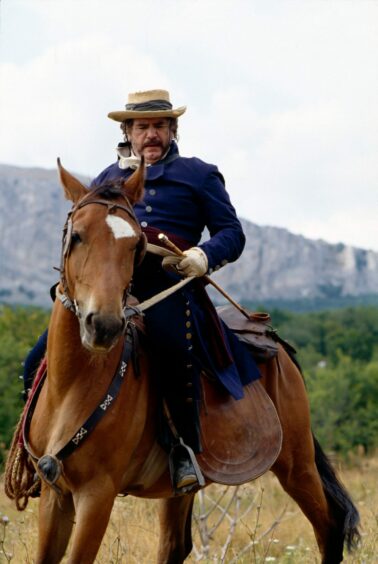
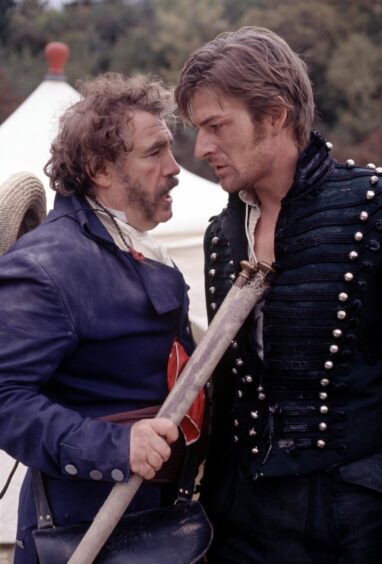










Conversation